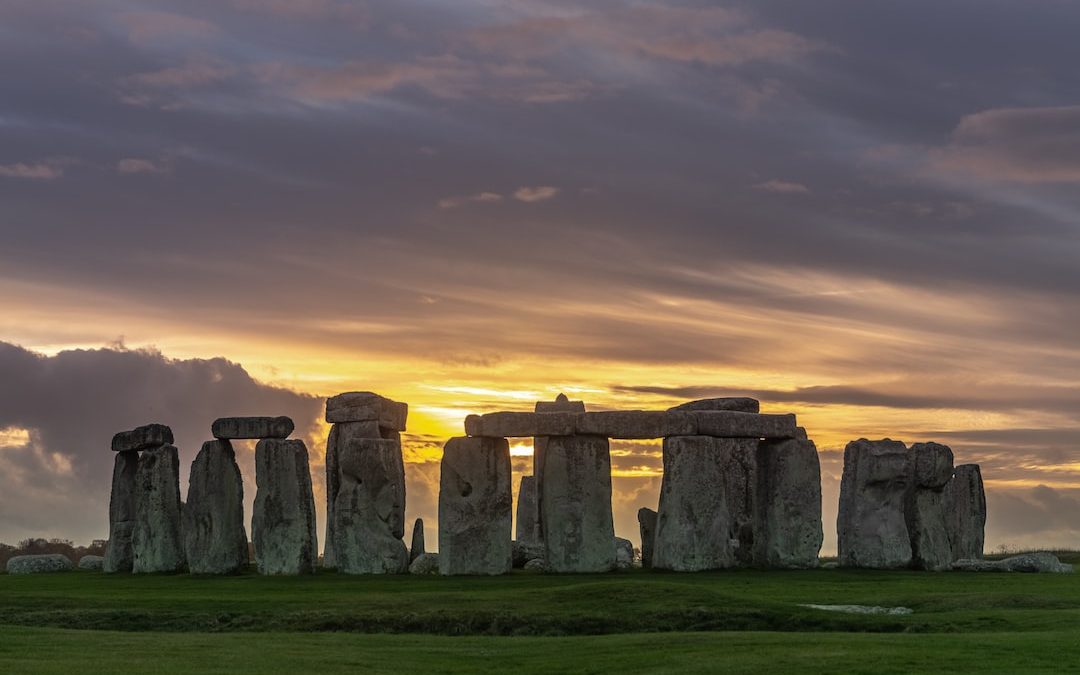Table of Contents
The Mysterious Stonehenge
Stonehenge is one of the world’s most mysterious and enduring archaeological sites. The giant stones, arranged in a circle, have been a source of fascination and speculation since they were first discovered thousands of years ago. What was the purpose of the mysterious monument? Who built it and why? These questions have been debated for centuries, and the answers remain elusive. In this blog post, we take a closer look at Stonehenge and explore some of the theories put forward by archaeologists, historians and other experts.
The History of Stonehenge
Stonehenge is believed to have been built between 3000 and 1500 BC, making it one of the oldest man-made structures in the world. It is located on the Salisbury Plain in Wiltshire, England. Although the exact purpose of the monument is still unknown, it is thought to have been used for religious ceremonies, burials and other rituals. The stones are arranged in a circle and aligned with the sun, which suggests that they may have been used to mark the passing of time and the changing of the seasons.
Archaeologists have found evidence of human activity at the site dating back to 8000 BC, when the area was used as a hunting and gathering ground. In the centuries following, the site was used for ceremonies and rituals, with the stones being arranged in a variety of different patterns. It is thought that the current layout of the stones was completed around 2500 BC.
The site was abandoned around 1500 BC and remained undisturbed until it was rediscovered in the 18th century. Since then, it has been the subject of numerous archaeological excavations and studies, and is now considered to be one of the most important prehistoric monuments in the world.
The Construction of Stonehenge
The stones used to construct Stonehenge were quarried from two different locations. The smaller stones, known as “bluestones”, were brought from Preseli Hills in Wales, some 140 miles away. The larger stones, known as “sarsens”, were quarried from the Marlborough Downs in Wiltshire. How the stones were transported, and why they were chosen, is still a mystery.
The stones were arranged in a circle, with the “bluestones” forming an inner circle and the “sarsens” forming an outer circle. Between the two circles is a horseshoe-shaped arrangement of stones. The stones were placed in shallow pits, and it is believed that the stones were moved into position using wooden sledges and ropes.
Archaeologists have found evidence of wooden posts and postholes at the site, suggesting that the stones were held in place by wooden posts. It is thought that the posts were made from oak, alder and hazel and were erected around 3000 BC.
The Purpose of Stonehenge
The exact purpose of Stonehenge is still a mystery, but archaeologists have put forward a number of theories. It is believed that the site was used for religious ceremonies and rituals, and was likely a place of worship for ancient people. The alignment of the stones with the sun may have been used to mark the passing of time and the changing of the seasons.
The site may also have been used for burials, as archaeologists have found evidence of human remains at the site. The stones may also have been used as a calendar, a temple or even a astronomical observatory.
Whatever the purpose of Stonehenge, it is clear that it was an important site for the ancient people who built it. It is likely that the site held great spiritual and religious significance, and was used for a variety of ceremonies and rituals.
The Legends of Stonehenge
Stonehenge has been the source of numerous myths and legends over the centuries. One popular legend tells of a giant named Merlin who used his magical powers to move the stones from Ireland to Wales. Another legend tells of a giant who built Stonehenge as a memorial to his dead son.
The most popular legend, however, is that the stones were brought to the site by a group of giants. According to the legend, the giants were led by a wizard named Merlin, who instructed them to build the monument as a temple to the gods. Although the legend is widely known, there is no evidence to suggest that it is true.
The legends of Stonehenge are just as mysterious as the monument itself. Whether the legends are true or not, they serve as a reminder of the enduring mystery of Stonehenge and the people who built it.
The Conservation of Stonehenge
Stonehenge is one of the most important archaeological sites in the world, and as such it is protected by law. The monument is owned by the Crown and managed by the English Heritage trust. The trust is responsible for conserving the site and keeping it open to the public.
The trust also works to preserve the site’s archaeological integrity. This means that any excavations or renovations must be approved by the trust, and are only carried out when necessary. The trust also works to protect the site from vandalism and other forms of damage.
The trust also works to promote the site and increase public awareness of its importance. The trust runs regular events and activities at the site, including guided tours, lectures and educational programs.
The Future of Stonehenge
Stonehenge is one of the most iconic archaeological sites in the world, and it is likely to remain so for many years to come. The site is protected by law and is managed by the English Heritage trust, which works to preserve its archaeological integrity and promote its importance.
The future of Stonehenge is uncertain, but it is likely that it will remain a source of fascination and speculation for many years to come. As new archaeological discoveries are made, we may finally learn the secrets of the mysterious monument.
Conclusion
Stonehenge is one of the world’s most mysterious and enduring archaeological sites. It has been the source of speculation and debate for centuries, and the purpose of the mysterious monument remains a mystery. Although we may never know the answers to the questions surrounding Stonehenge, it is clear that it is one of the most important prehistoric monuments in the world.
The site is protected by law and managed by the English Heritage trust, which works to preserve its archaeological integrity and promote its importance. The future of Stonehenge is uncertain, but it is likely that it will remain a source of fascination and speculation for many years to come.












